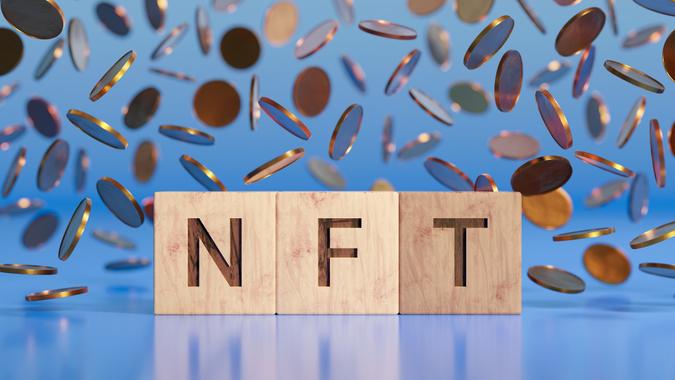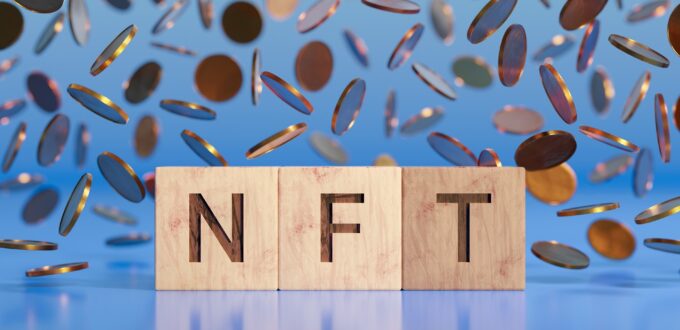
Soulmemoria / iStock.com
NFTs, or non-fungible tokens, are rising in popularity as both a collectible and an investment. But your NFT’s value depends largely on its rarity, or how many similar NFTs have been created. Keep in mind, every NFT is a one-of-a-kind. It’s in the definition of a non-fungible token, which means something that cannot be exchanged for something exactly like it.
To compare NFTs to cryptocurrency, which is fungible: You can trade one bitcoin for another bitcoin and both people will have the same item with the same value at the end of the transaction. You can trade one NFT for another and, while the NFTs may be comparable in value, they are not the exact same item. One may appreciate and one may depreciate in the future, whereas the two bitcoins will always have an equal value, appreciating or depreciating together.
However, NFTs can be considered rare based on how rare their various attributes are compared to other NFTs.
How Do You Rank the Rarity of NFTs?
There are several traits used to assess the rarity of an NFT, according to Coinwire. NFT rarity may depend on the number of similar NFTs created in the series. If there is a limited supply of NFTs from one artist, developer or organization, that NFT may be considered rare.
The NFT could be rare if its attributes are not common. Similarly, an NFT with special uses, such as perks for its owners, could be more valuable than one that simply represents a piece of digital art. For instance, the Fanzone Sports Club has released NFTs that give owners access to VIP meetups, parties, and events.
NFT value can also be driven by the NFT’s history. Just as baseball cards may become more valuable if the player broke records or if the card commemorates a significant moment in baseball history, NFTs that were part of a specific game could hold more value. Limited edition NFTs based on original artwork may also be considered rare because of historical context.
Finally, NFTs associated with celebrities often grow in value for the same reasons people gravitate toward any collectibles or products associated with celebrities. These NFTs tend to be uncommon and prestigious, similar to Vogue editor Anna Wintour’s Nike sneakers, which retailed for $220 in 2018, according to theFashionSpot.
It’s worth noting that a Nike NFT, representing a line of virtual sneakers called CryptoKicks, recently sold for $134,000, according to The New York Times. There were only 20,000 NFTs released in the line, making them rare even without a celebrity tie-in.
Calculating the Rarity of an NFT
Once you consider the different traits of an NFT, you can put them together to determine its overall rarity, which contributes to its value. There are four different ways to assess the rarity of different traits in an NFT, according to Sensorium.
Trait NFT Rarity Ranking
Based on the traits listed above, you can rank an NFT based on its rarest trait. For instance, a celebrity NFT would receive a specific ranking based on the popularity of the celebrity, while an NFT series in scarce supply would receive a high ranking based on its limited supply.
Average Trait Rarity
A more accurate way to determine the rarity of an NFT would be to average the rarity of each trait. If an NFT has two attributes that make it rare, one with 10% ranking and one with 90% ranking, the NFT would have a rarity of 50%. Of course, this can get complicated as NFTs have multiple traits to assess.
Statistical Rarity
If you’re evaluating multiple traits, you can also use the statistical rarity method. Using this process, you’d multiply all the traits together to determine its rarity. You may get different numbers using the statistical method vs. the average method.
Rarity Tools — NFT Value, Simplified
The problem with the above methods is that it often weights different traits too heavily — or not heavily enough. The solution is using rarity tools to assess NFT value.
What is a rarity tool? These apps take away the math, the doubts and the complications from valuing NFTs before you buy or sell. There are many NFT rarity tools available. Here are some of the most popular platforms.
NFT Rarity Tool: Rarity Sniper
Deemed “the #1 source for NFT rarity” by its creator, Rarity Sniper allows you to check the reality of 1,715 NFT collections on 18 different blockchains, including Ethereum, Solana and MATIC. With an easy-to-use search interface and an active Discord community, for many collectors Rarity Sniper is the only rarity tool for NFTs they need.
Pros
- Massive amount of NFTs listed
- Easy to use interface
Cons
- Rarity of an NFT does not guarantee it will increase in value
NFT Rarity Tool: Rarity.Tools
Rarity.Tools ranks generative art and collectible NFTs by the rarity of multiple attributes. Rarity.Tools shows users exactly what factors contribute to its rarity score. Additionally, the platform assesses each NFT based on the community that created it, since each community places different weight on different attributes.
The process may sound complicated, but ultimately, what you need to know is the rarity of your NFT based on the platform’s calculations.
Pros
- Easy to use interface
- Customized rarity ranking based on the specific NFT community
- Fast filtering
Cons
- Rarity is not the only factor used to value an NFT
NFT Rarity Tool: OpenSea
OpenSea is not specifically an NFT rarity tool but it can provide the information you need to assess the rarity of an NFT on your own. As the world’s largest marketplace for crypto collectibles and NFTs, OpenSea offers details on an NFT’s volume, floor prices and character traits.
Pros
- Easy to use
- Track sales in real time
Cons
- Does not provide a rarity rank or score
NFT Rarity Tool: Moby.gg
While it’s not the most widely used NFT rarity tool platform, Moby.gg offers real-time assessments of NFT value. You can set timeframes so you can watch data for the past 10 minutes, 24 hours or other intervals. Easy to read charts show the collection’s floor, average price, trading volume and number of sales in real-time.
Pro
- Real-time data available
- Easy to use
Cons
- Real-time tracking and other features only available in the Pro version
- Must pay using crypto for the Pro version
Final Take
The rarity tool you choose for your NFT investments depends on the blockchain you’re using, what traits or characteristics you’d like to assess and, ultimately, which platform makes you most comfortable.
Since many rarity tools are free, it doesn’t hurt to check multiple sites before you make a decision to buy or hold an NFT.
FAQ
Here are the answers to some frequently asked questions about NFT rarity tools.
- What is the use of rarity tools?
- Rarity tools show you the value of an NFT, based on many different characteristics, so you can make wiser investment choices.
- Where can I find real-time NFT rarity data?
- You can find real-time NFT rarity data on Moby.gg and on other rarity tool platforms.
- What does rarity in NFTs mean?
- When you’re assessing NFTs, rarity means the number of unique traits or aspects within that collection. Rarity can be gauged in a number of ways and is one of the key factors in determining NFT value.
- How do you check the rarity of your NFT?
- You can check the NFT rarity using any of the rarity tools available online today, including Rarity Sniper and Rarity.Tools.
About the Author
Dawn Allcot is a full-time freelance writer and content marketing specialist who geeks out about finance, e-commerce, technology, and real estate. Her lengthy list of publishing credits include Bankrate, Lending Tree, and Chase Bank. She is the founder and owner of GeekTravelGuide.net, a travel, technology, and entertainment website. She lives on Long Island, New York, with a veritable menagerie that includes 2 cats, a rambunctious kitten, and three lizards of varying sizes and personalities – plus her two kids and husband. Find her on Twitter, @DawnAllcot.

Check Out Our Free Newsletters!
Every day, get fresh ideas on how to save and make money and achieve your financial goals.

No Comments Yet